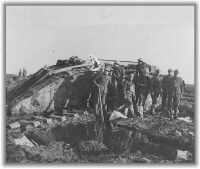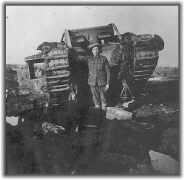
Tank warfare in the First World War was only a fledgling idea. Up to this point, the cavalry had played a vital role in battle and many generals viewed the idea of men riding into battle on horseback with drawn sabres was the chivalrous and gentlemanly way to fight. The tank was soon to mark the end of such a style of battle and usher a new era of warfare, where technology played an ever increasing role, into existence.






